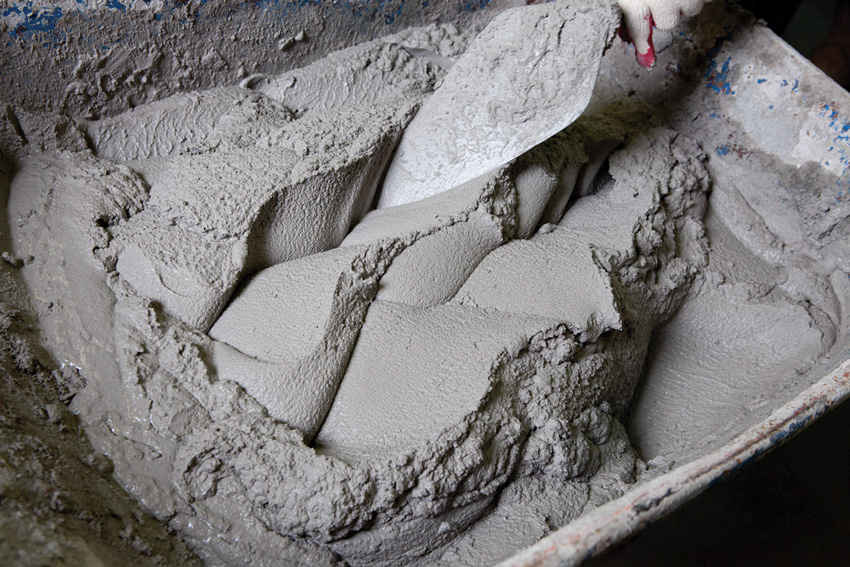Modern Masonry Using Pre-blended Mortar
Mortar Types and Strength
Regardless of the standard used or whether the property or proportion specification is selected, there are four types of mortar that are identified for building construction as follows:
- Type M: This mortar classification achieves the highest overall compressive strength based on the property specification of ASTM C270, with a minimum capacity of 2,500 pounds per square inch (psi). It also needs to contain a minimum of 75 percent water retention and a maximum air content of 12 percent. Note that type M mortar should only be used where higher than typical compressive strength is called for in load-bearing interior or exterior walls (below or above grade). Otherwise, type M should be avoided in situations where it isn’t required. This is consistent with the ASTM C270 statements: “Do not specify a higher-strength mortar than that required for the masonry unit and application” and “Do not substitute higher-strength mortar for weaker specified mortars.” The reasoning behind these statements is based on compatibility with the surrounding masonry. Masonry that is not under high levels of compression but has a mortar with high compression resistance capabilities may result in cracking or splitting of the masonry units (i.e., CMU, brick, etc.).

Using higher-strength mortar than called for in a wall can create structural problems in the adjacent masonry units.
- Type S: This is a standard but superior mortar classification with an ASTM C270 minimum compressive strength of 1,800 psi. It similarly needs to contain a minimum of 75 percent water retention and a maximum air content of 12 percent. Type S mortar is suitable for load-bearing exterior walls at or below grade, including foundation walls, retaining walls, pavements, walks, and patios. It could also be used as an alternative for load-bearing or non-load bearing interior or exterior walls above grade if structural requirements dictate it.
- Type N: This is a normal mortar classification with an ASTM C270 minimum compressive strength of 750 psi. Like the other mortars, it needs to contain a minimum of 75 percent water retention and a maximum air content of 12 percent if structural reinforcement is used—otherwise air content can increase to 14 percent. Type N mortar is suitable for above-grade load-bearing exterior walls and parapets as well as load-bearing interior walls. It could also be used as an alternative for most other masonry situations, such as non-load bearing interior walls, exterior walls below grade, or tuckpointing open joints when warranted.
- Type O: This is the lightest-duty mortar with an ASTM C270 minimum compressive strength of 350 psi. Like type N mortar, it needs to contain a minimum of 75 percent water retention and a maximum air content of 12 percent if structural reinforcement is used—otherwise air content can increase to 14 percent. Note that this is the same ratio for sand as for other mortar types, but since the overall amount of cement and lime mixture could be notably more, the actual quantity of sand could also be notably more. Type O mortar is recommended for light-duty applications, such as tuckpointing open joints or for non-load bearing interior walls.
Clearly, there are some notable differences between the different types of mortars in terms of properties, strength, and performance as well as good reasons to be sure the right formulation is selected and used for particular applications in a building. Since there are also choices in how they are blended it is easy to see how the potential for error exists if the wrong proportions are used or if they are transposed between different types of cement.
Mortar Makeup
The basic formulation and mixing of mortar creates a man-made product using a combination of mostly natural ingredients. Among the most significant factors that contribute to making a good mortar is the quality of the individual ingredients. Therefore, separate from standards for the mortar, the industry has developed standards that identify quantifiable specifications relevant to each item used in mortar. These ingredients include those listed as follows:
- Cement: This is essentially the paste that provides basic structural adhesion to hold the other ingredients together. Of course, cement is just one ingredient of mortar and is usually a manufactured product produced independently of the mortar. It is typically formulated through a controlled chemical combination of calcium, silicon, aluminum, iron, and other basic elements. When these ingredients are heated at high temperatures, they form a rock-like substance called clinker that is then ground into very fine cement powder. When it comes to the specific type of cement used in mortar, there are two common choices, which vary by the ratio of their mix of cement ingredients and the resulting properties.

Masonry mortar and all of its ingredients contribute to all types of buildings of all sizes.
- Portland cement is categorized into 10 different types based on specific properties as identified in ASTM C 150: Standard Specification for Portland Cement. While portland cement is used in general concrete and masonry construction for a variety of purposes, it is also commonly used as the cement ingredient for masonry mortar. To be effective in this use, additional lime is typically called for in addition to the lime already in the portland cement.
- Masonry cement is quite specifically formulated for masonry construction and is classified as type M, S, or N, according to the prescribed physical requirements of ASTM C 91: Standard Specification for Masonry Cement for the type specified. Under this standard, masonry cement shall conform to prescribed requirements, such as fineness, autoclave expansion, time of setting, compressive strength, flexural bond strength, air content of mortar, and water retention. In general, the cement type should be used to match the mortar type, such as type M or S masonry cement being used to create type M or S mortar, respectively. Type N masonry cement is used for either type N or type O mortar. Since masonry cement has higher contents of lime than portland cement, there is no need to add additional lime when mixing it in mortar.
- Hydrated lime: This ingredient, although already present in the cement, may be added to portland cement to further promote the chemical hydration process of the mortar and improve workability, water retention, and overall strength. Hydrated lime, whether used solely in the cement or added to the mortar mix, is subject to ASTM C207: Standard Specification for Hydrated Lime for Masonry Purposes, which identifies four different types of lime suitable to different masonry conditions.
- Masonry sand: This is the fine aggregate in the mortar that is often called the backbone of mortar. It provides bulk and body for the mortar, while also contributing directly to the overall yield of the mortar mix. This is because anywhere between two-and-a-fourth to six times the quantities of sand is used by proportion compared to the cement and lime in different mortar mixes. From a functional standpoint, it contributes directly to the strength and shrink resistance of the mortar. Because of its key role, masonry sand is subject to the very specific ASTM C144: Standard Specification for Aggregate for Masonry Mortar. This specification covers all aggregate types for use in masonry mortar, which is specifically limited to natural sand or manufactured sand. Manufactured sand is produced from crushing stone, gravel, or air-cooled iron blast-furnace slag that has been specially processed to ensure suitable gradation. The standard requires that the selected sand aggregate must be graded within prescribed limits. Further, the amount of deleterious foreign substances in aggregate for masonry mortar is limited within those grading standards. The sand aggregate is also subject to five cycles of a soundness test, a density test, and a calculation of the air content of the mortars where the sand is used.
- Potable water: As a combination of hydrogen and oxygen, water is needed to allow chemical hydration to occur in the mortar. This is not a matter of water as a mixing agent that then evaporates away but a true chemical reaction that creates the bonding of materials, particularly within the cement and lime. In other words, this chemical hydration is what transforms the dry mix of separate ingredients into a single, solid mass. Because of its critical chemical role, the standard specification for water requires it to be of potable quality suitable for drinking and free of impurities.
- Air: Inherent in the process of mixing anything, air is commonly trapped in the form of bubbles of various shapes. That is ok for mortar as long as it is controlled so it doesn’t affect the other properties of the mortar. The amount of air is governed or impacted by different ASTM standards related to the cement, the sand, or the overall mortar mix.
- Admixtures: These are chemical or natural additives introduced to the mortar mix to promote particular characteristics either for performance, such as added strength or water resistance, for workability, such as increasing set time, or for appearance, such as color. Most admixtures need to demonstrate that they do not compromise any of the other capabilities and characteristics of the mortar.
Clearly, there is a lot of information, testing standards, and knowledge on each of the ingredients of mortar, which require some skill and understanding to be sure that each ingredient is appropriate, high quality, and suited to its intended use.









